Companies and individuals have been building websites for more than 20 years – and have been trying to rank them at the top of search engine results pages (SERPs) for just as long.
Search engines have come and gone over these two decades (anyone remember AltaVista, Excite, Lycos or Ask Jeeves?), and over that time the difficulty of ranking a website has increased dramatically.
One reason is the sheer volume of online content; there were approximately one million websites online in 1997, compared to over one billion websites today.
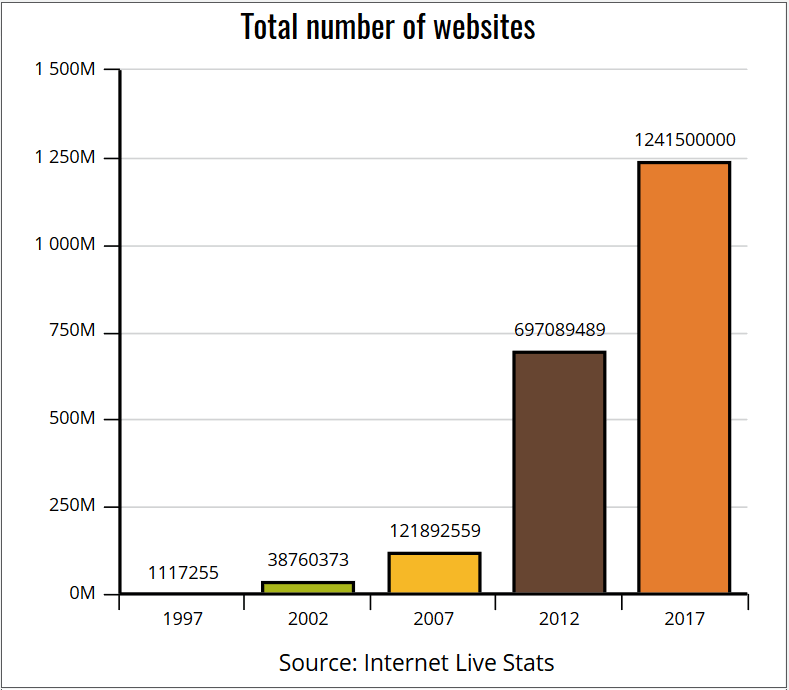
Another factor is that Google has become a near-monopoly, and this has given the search giant the power to determine what the world sees in the SERPs.
Just as important, though, is the cat-and-mouse game played by Google and spammers.
The latter continually develop increasingly sophisticated techniques to outwit search algorithms, so Google constantly tweaks its ranking formulas and standards to devalue the spammers’ so-called “black hat” SEO methods.
That’s good news for surfers, but it’s also good news for white hat SEO experts, who are trying to figure out the secrets to higher rankings. It levels the playing field, and makes white hat SEO techniques more efficient than ever.
White Hat vs. Black Hat SEO
A full-blown discussion of white hat vs. black hat search optimization strategies would require an entirely separate article. However, the difference between the two approaches is easy to understand.
Black hat SEO relies on techniques which violate either the spirit, or the letter of search engine guidelines.
In the best-case scenario, black hats take advantage of loopholes to fool the algorithms which determine search placement.
In the worst case, their approach involves illegal methods like hacking high-quality websites, with the goal of inserting backlinks that lead to their own web properties.
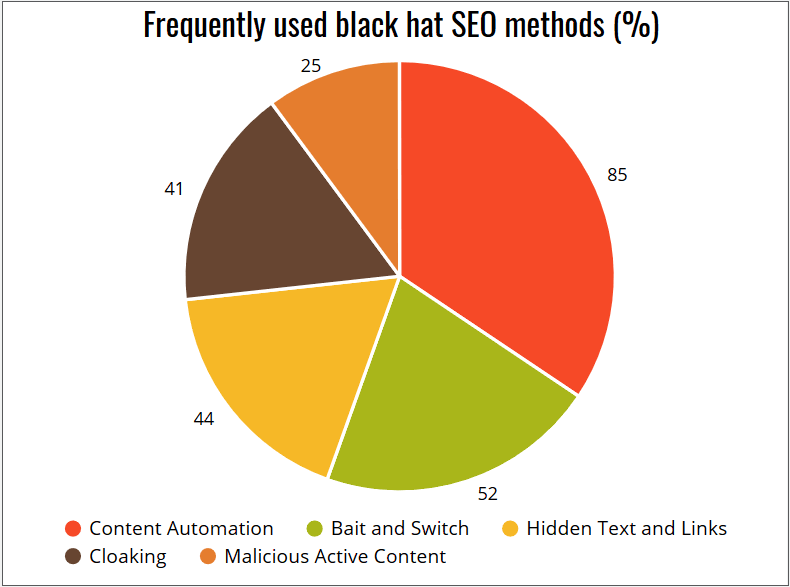
White hat techniques attract search traffic through legitimate means, enticing visitors with valuable content or other useful resources.
White Hat SEO Services Explained
Google’s goal is to rank the best sites for every topic, based on robust content and a rewarding user experience.
Consultants offering white hat SEO services help create and promote exactly the type of content that Google’s algorithms are designed to find and reward.
There is much more to effective search optimization than simply writing useful articles and uploading them to your website, of course. Hundreds or thousands of your competitors are probably doing the exact same thing.
You must expand your reach beyond the pages of your site, and having high-quality content is the most important step of the process.
Compelling content isn’t something you can just dash off in a few spare minutes, and it’s much different than the dry or scholarly article you might write for an industry journal.
Whether written for your own site or for placement elsewhere on the web, content must be carefully crafted to engage visitors, while presenting information they’ll find interesting and useful.
If you don’t have great content, your SEO efforts will be useless.
A comprehensive manual for online content creation could take up the balance of this article. But here are some guidelines to follow.
- Be original. It’s not just a good practice to “write your own stuff.” It is crucial, when your content is aimed at attracting visitors and improving search engine rankings.
Google’s algorithms can easily detect copied or rewritten content, and then penalize the sites publishing it. More than that, if you don’t have something new and interesting to say, people won’t be motivated to read it, and other websites won’t be inclined to link to it.
Yes, it is time-consuming and expensive to write (or hire someone to write) original, compelling content. But just as it wouldn’t make sense for a company to “borrow” a competitor’s marketing slogans and materials, it makes no sense to cut corners on content – which is, in effect, the key marketing material for any website.
- Be conscious of your audience. If you have a target audience of industry professionals, using industry terminology and jargon is totally appropriate. In most cases, though, your content will be read by a wide range of website visitors, who have very different levels of subject knowledge.
They’ll probably also have very different abilities when it comes to reading and comprehension. So, picture your average reader and write directly to him or her, not to someone with the same topic familiarity or comprehension level that you may have.
- Be interesting, starting with your title. Don’t forget that to get your content promoted, you must entice people to… read it, of course!
Ensure that your writing is interesting, thought-provoking or informative, and holds people’s attention from beginning to end.Spend plenty of time crafting the title, because it will either draw in potential readers, or send them in search of something more interesting.
Only you can decide whether “sensational” is the right tone for your content, but it’s been proven that titles starting with “The 5 Best…” or “The Shocking Truth About” will draw more readers than those that start with “An In-Depth Look At…” or “A Summary of Research Findings On…” At the very least, try to find a happy middle ground.
- Be considerate. Most readers don’t want to read huge chunks of text, so make your content easy to digest. Use short phrases and paragraphs, break down the text into smaller chunks using graphics or videos if they complement the text nicely, etc. Keep your articles interesting and on topic.
- Don’t try to satisfy Google. Many writers go too far, loading their content so heavily with search-friendly keyword phrases that it becomes almost unreadable for humans.
It is important to include the targeted search phrases in your content, but don’t go overboard and stuff your articles with keywords. If your keywords didn’t make their way into the article naturally, you need to do more research.
Google’s algorithms are pretty sophisticated these days; they can easily identify the topic of your content by analyzing it. So, spend time satisfying your readers, and not Google.
Now that you’ve written some great content, here are the most effective, evergreen white hat SEO techniques that will boost your site higher in Google’s SERPs.
White Hat SEO Technique #1: Influencer marketing and blogger outreach
Many people use these two terms interchangeably, because the concepts behind influencer marketing and blogger outreach are the same.
Here’s how they work. Let’s assume that you are trying to put your products, services or ideas in front of those who would be most receptive to buying, trying or reading them.
There are many ways to reach those people one at a time, from advertising and search engine marketing, to putting flyers under their windshield wipers.
Or – you can find people who already have the attention and confidence of a large number of your prospective customers, clients or readers, and have them do the heavy lifting.
Social media influencers are people who have large numbers of followers on one or more social media platforms. Similarly, popular bloggers have many website visitors and a very large, devoted readership.

There are many social influencers and popular bloggers who focus on your industry, so their followers will very likely be interested in what you have to say.
Identifying those influencers is the first step. You are probably already aware of some of them, because you are interested in the same subjects.
White hat SEO companies use specialized tools to discover influencers that are a good fit for their clients. It’s easy to do it, if you’ve got the proper tools.
Getting these powerful influencers to spread your message, however, takes time and effort.
They are constantly barraged with requests and offers from people who want the same thing – to take advantage of their popularity. But just like most white hat techniques, influencer marketing and blogger outreach require a gentle touch.
Picture a social media influencer with tens of thousands of Twitter followers. Now imagine what their timelines and direct messages must look like. Posting to an influencer’s timeline or sending them a DM is simply shouting into the wind!

The much better approach is to build a relationship over time. Follow them, retweet or share their posts, link to their websites, and slowly get them to recognize you and know who you are.
The more value you contribute to an influencer’s social interactions, the more trust you will build.
Eventually, you will feel comfortable enough to ask their opinion on something you’ve written, or to propose a mutually-beneficial relationship. The time you spend establishing these contacts will be worth it in the long run.
The approach is very similar when it comes to blogger outreach. Be a regular reader of their articles, and then post relevant and informational comments, becoming a familiar presence and demonstrating your industry expertise.
It is also helpful to follow the top bloggers, and then interact with them on social media. Mention them on your own website, linking to some of their best posts.
Once you’ve established a positive presence and they know who you are, they will be more likely to respond to a short email which offers your product or service for review, or your content for a backlink.
Whenever you are requesting something of value from influencers or bloggers, don’t waste their time. Make your email personal, short, punchy and to the point, and be sure to look at the exchange you have in mind from their point of view as well.
What value will they receive from whatever you’re suggesting? Most of them are probably getting many other solicitations that are similar to yours, so be sure to offer something that will truly be valuable in their eyes.
Here’s an example:

If you have a site which attracts many visitors, you can use another outreach strategy that works great. Reach out to influential bloggers or social media influencers and invite them to write a guest post for your site. Be sure to include some website traffic stats in your email.
Many influencers will see value in providing you with a post for your site, and the social media or website promotion they will do for this post will expose an entirely new audience to your site.
No matter if we are talking about influencer marketing or blogger outreach, you should remember one thing: you need them more than they need you.
Just as you would in real life, be sure to cement a relationship that is grounded in respect and shared interests before asking them any favors, or trying to make a deal.
White Hat SEO Technique #2: Follow the industry leaders
No one has the Internet to themselves anymore. Everyone has competitors, and at least some of them rank higher than you in the SERPs.
Being a copycat is a bad approach to creating content, but it makes total sense when searching for powerful sources of white hat SEO backlinks.
If a high-authority website has linked to your higher-ranking competitor, you may be able to obtain the same link – and the same benefits that arise from having it.
There are several SEO tools like Ahrefs, SEMRush and Majestic, which will let you “spy” on the competition. Here’s how easy it is to discover your competitors’ best links using Ahrefs.
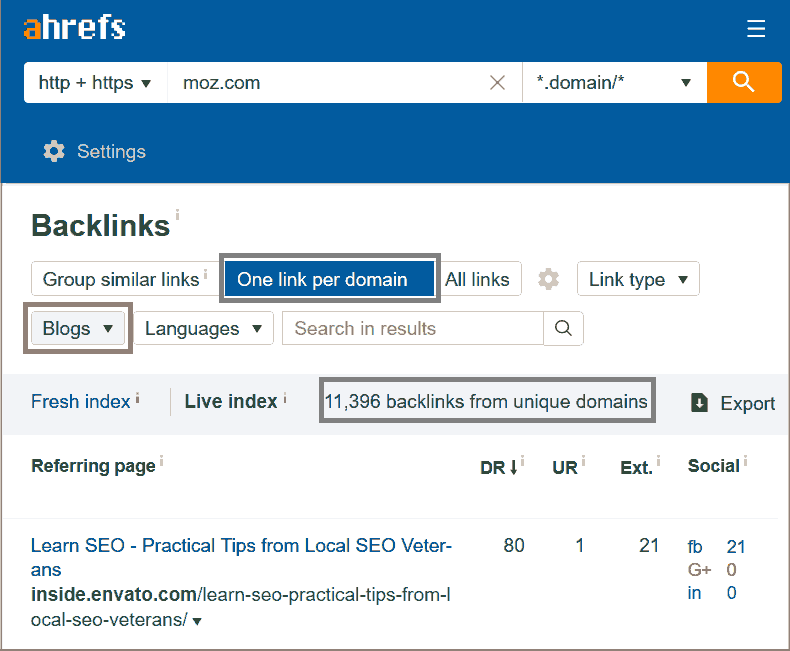
Simply enter the URLs of your competitors in the appropriate section of your favorite link research tool, and you’ll be able to see most of the websites that link to them.
Sort the industry-related sites according to their authority, and then determine the method that was used: outreach, guest posts, or other SEO techniques. Use the same approach to get similar links for your website.
White Hat SEO Technique #3: Guest posting
Since I have already mentioned guest posts, let’s address this subject right now.
Guest posting is similar in some ways to blogger outreach, but it’s a more straightforward white hat SEO link building method.
The outreach technique I’ve described above is valuable when dealing with websites which don’t accept posts from other sources. Many authority sites, however, regularly publish high-quality content that is supplied by others, “paying” for it with a backlink that leads to the authors’ websites.
You may have come across sites like these in your daily web surfing, but the more reliable approach is to search for them in Google.
Use search strings like these:
“subject” + “guest post”
“subject” + “write for us”
“subject” + “write for me”
“subject” + “submit a guest post”
“subject” + “accepting guest posts”
“subject” + “guest posts guidelines”
“subject” + “become a contributor “
where “subject” is the topic of your site, and you will discover lots of opportunities.
Narrow down your list by checking the websites on Alexa.com for a quick look at how popular they are.
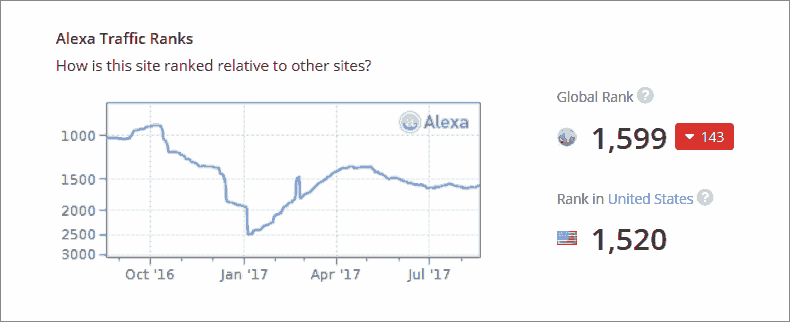
Always choose sites that have an Alexa rank below 10,000,000.
Then, use one of the SEO tools I’ve mentioned earlier for a deeper look at the sites’ link power.
Each tool has a different method of measuring site authority, such as “Domain Rating” for Ahrefs or “Trust Flow” for Majestic, so be sure to compare apples to apples.
Once you have a manageable group of targets, verify if the websites are good for your purpose, and then check their guidelines on guest posting.
Most sites worth submitting to are quite specific (even picky) about their requirements. You should also explore each site carefully, to understand why certain guest posts have been accepted and published.
When you are ready, contact the webmasters, offering them several suggestions for a guest post that complements the existing content. If you have done your legwork properly, chances are high that your proposal will be accepted.
Here’s an example.
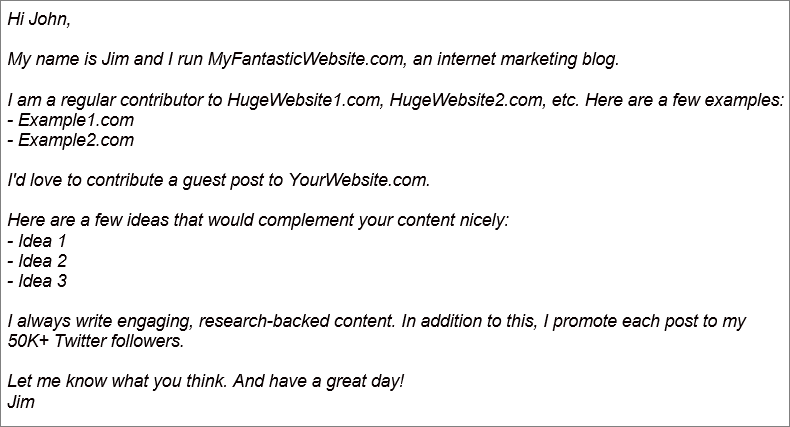
You will have to spend some time producing a high-quality article that meets their guidelines, and you may need to edit your post several times before it is finally accepted. Still, you will end up with a powerful link that most of your competitors aren’t likely to have.
White Hat SEO Technique #4: Niche directories
The majority of consultants working for a white hat SEO company will have a three-word response if you mention the phrase “directory sites” to them: “not worth it”.
That is largely true for the vast majority of directory websites, which don’t have a big link authority and don’t send much traffic.
However, there are some high-authority, topic-specific directories which are definitely worth your time.
The approach we’ve used to find sites for guest posting is also applicable when searching for powerful niche directories.
Use Google search strings like the one below to build your target list:
“subject” + “directory”
Be imaginative when searching for topics; don’t stick to a single subject/keyword!
Once that your list is ready, evaluate website traffic and link power in your favorite SEO tool to determine the sites that are worth submitting to.
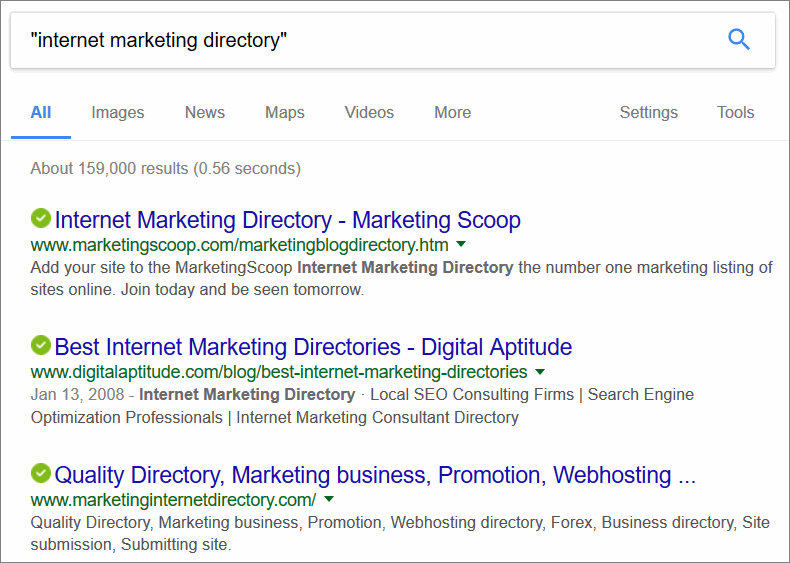
You should also check each site to make sure it’s legitimate, and not just a single list of hundreds of links.
A website that includes huge list of links on a single page won’t be able to send much link juice or traffic.
Also, if you see spammy sites or worthless links in a directory, or if it hasn’t been updated in years, move on. You don’t want to be in a neighborhood like that.
Some directories will insist on either a small payment or a reciprocal link in return for listing your site. You should never provide a reciprocal link, but a moderate one-time fee may be worth paying, if a directory site is particularly strong.
White Hat SEO Technique #5: Forum marketing
Anyone who frequents online forums or communities quickly learns to take a dim view of hit-and-run forum spammers. That type of activity falls more into the category of black hat SEO, rather than white hat.
Forums and communities that are related to your topic or niche can be an outstanding source of white hat traffic and links when handled properly.
Every forum has a core of regular participants, who have become mainstays of the community. Your goal is to find forums which match your target subject or niche, and then become one of those core participants.
That’s not as time-consuming a task as it might initially sound, because the discussion topics should be the ones that naturally interest you.
You can probably guess the first step: find forums in your niche using a Google search.
“subject” + “forum”
Then, filter the results, finding the most popular and active communities.
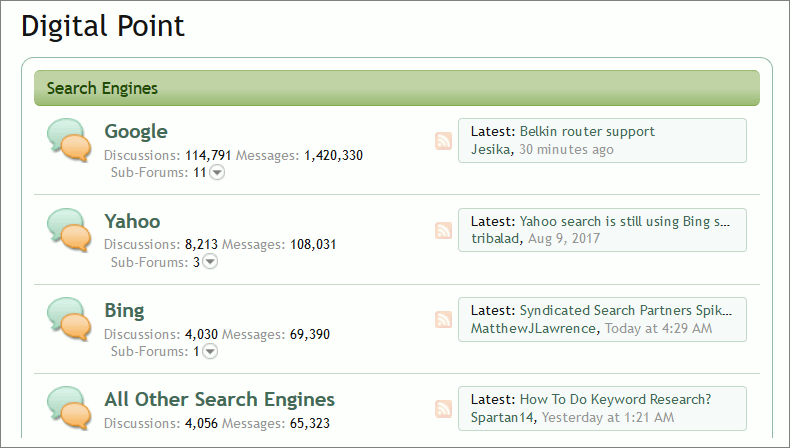
Sign up, introduce yourself (most forums have an “introductions” thread) and begin participating.
As an expert in your subject area, you should be able to answer most of the questions that are posted by members, and before you know it your reputation will grow. Making occasional, informative posts on subjects of interest to the group will help even more.
But how does the SEO component of this method work?
Every forum will allow you to set up a personal profile, which includes your business/website name and URL.
This signature will be displayed below each one of your posts, increasing the number of backlinks that lead to your site each time you post a reply.
More importantly, as your reputation grows, you will see a growing number of forum members clicking your signature link to visit your site – and you will know for sure that every one of them is in the group you’re targeting!
One warning: don’t spam. Be pleasant, professional and helpful. Let your expertise and personality speak for themselves!
The easiest way to be ostracized from any forum or community is to be seen as a spammer.
Some forums will let trusted members make occasional promotional posts, but be sure you know the rules before doing so. Check with a moderator before posting if you aren’t sure.
White Hat SEO Technique #6: Paid social media marketing
Several popular social media platforms, notably Facebook and Twitter, allow you to target your advertising directly to specific audiences.
For example, the “Detailed Targeting” section of the Facebook Ads Manager lets you choose the location, age, gender and language of your preferred audience.
In addition to this, the “Flex Targeting” feature allows you to select detailed interests of your audience. You can also choose specific fan pages, or groups to whose members your ad will be shown.
This drastically limits the amount of money you’ll have to spend on ads and increases their efficiency, by showing them only to people who are interested in seeing your message.
Promoting a website, a blog post, or a product is very similar, making this a budget-friendly option for building traffic and selling products to a targeted audience.
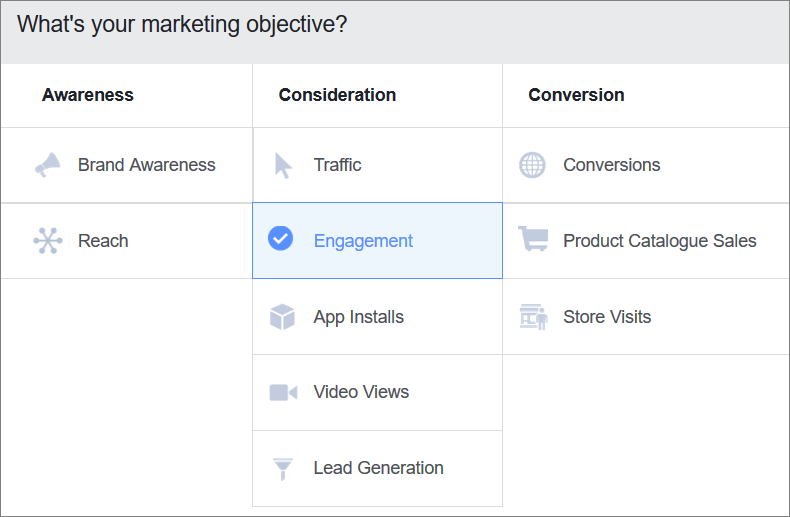
It is also a very effective way of making a post go viral, since the targeted audience will be likely to like or link to your post, boosting its SEO authority.
Some people rely exclusively on paid social media marketing campaigns. But their effect is greatly amplified when they are combined with the evergreen SEO strategies presented above.
White Hat SEO Technique #7: On-page search engine optimization
Professionals working in the search engine optimization field often refer to two general types of SEO: on-page and off-page.
The techniques we’ve discussed so far deal with off-page SEO, things you can do on the web to drive traffic to your site.
However, the on-page elements can be just as important, because Google will always downgrade any site that doesn’t provide an enjoyable, rewarding user experience.
Having high-quality content on your website is an important part of the equation, but many other factors are also crucial.
Here are the key on-page factors that you should implement anytime you write a new content piece.
- Descriptive URLs;
- Optimized title and description meta tags;
- Keyword-rich H1, H2, H3 and image tags;
- Content that includes LSI keywords;
- Multimedia content;
- Content above the fold;
- Outbound links to authoritative information sources;
- Fast loading content;
- Mobile friendliness.
Don’t forget that the quality of your website design and presentation, the ease of navigating through your site, and even the proper coding of your pages (the stuff visitors never see, but Google’s spiders do) can mean the difference between a first-page ranking and being buried on the 5th page of the SERPs, where searchers will never go.
Further reading:

